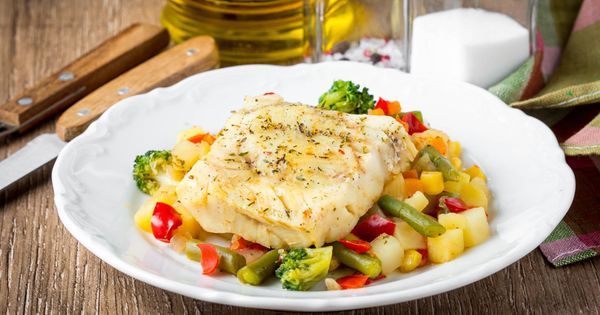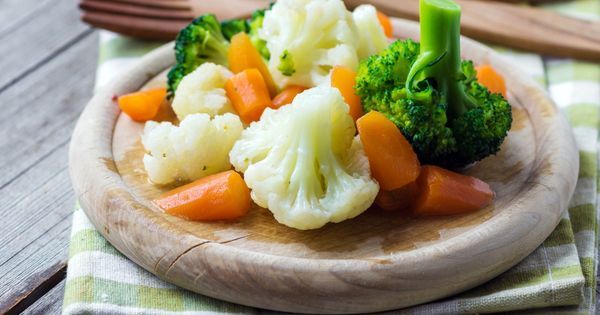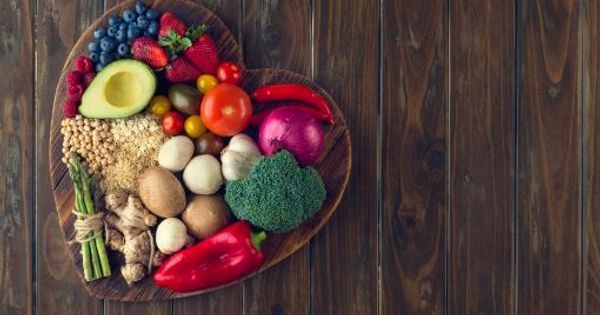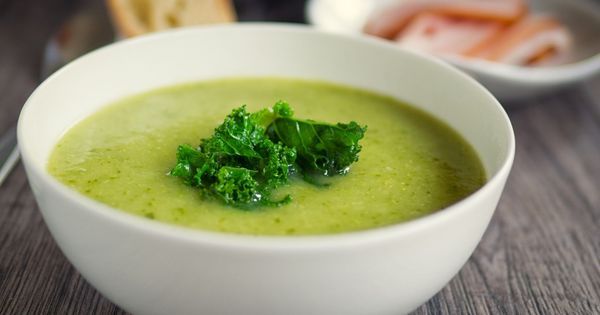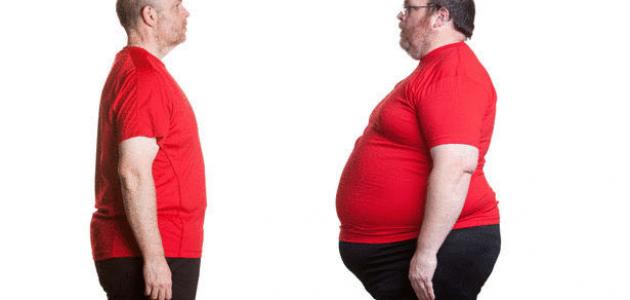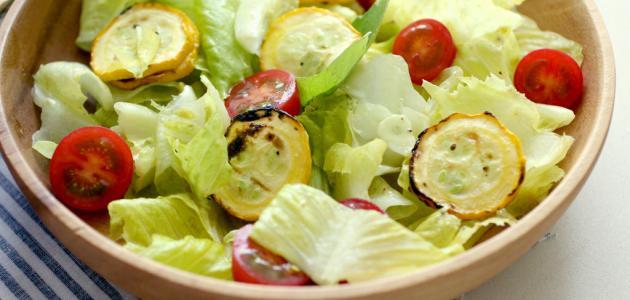Developed by two English doctors, diet 5.2 consists of alternating two very strict days and five balanced normal-calorie days. Studies show that it allows you to lose at least as much weight in the short term as conventional diets and improves several cardiovascular risk factors. In the medium to long term, it can be difficult to follow and does not provide enough protective nutrients.
What is the 5: 2 diet?
The 2-day diet, or diet 5:2, was developed in the late 2000s by Dr Michelle Harvie and Professor Anthony Howell, two English doctors researching at the University of Manchester and specializing in the prevention and treatment of breast cancer.
Aiming at lasting weight loss, it consists of alternating 2 days of strong energy restriction (reducing caloric intake by 70 to 75%) and "healthy" days inspired by the Mediterranean diet during which the usual energy intake is maintained.
Diet 5:2 is offered as an alternative to a classic diet - during which energy intake is reduced 7 days a week - which is difficult to maintain over time.
Drs Harvie and Howell started from the observation that their patients, who must lose weight or avoid gaining weight, have great difficulty in reducing their energy intake sustainably. Indeed, the relationship between overweight and a fortiori obesity and the risk of breast cancer is complex, but hormones secreted by fatty tissue increase the risk of a number of cancers.
Studies show that obesity modifies the effectiveness of chemotherapy and increases the risk of infection and postoperative surgery. Women treated with chemotherapy for breast cancer have also been shown to gain weight and body fat during and in the months following treatment (due to a reduction in their basal metabolism). Preventing this harmful weight gain therefore implies being able to maintain a diet over the long term.
How does the 5: 2 diet work?
Drs Harvie and Howell verified the effectiveness of the 5:2 diet in a first study published in 2011 in the International Journal of Obesity. Since it has been shown to be at least as effective as a conventional diet in terms of total weight loss and fat mass, they concluded that it is of interest for the prevention of many diseases linked to overweight ( type diabetes ), cardiovascular diseases ). They, therefore, perfected it and presented it to the general public in a book - published in France in 2013.
- The two very restrictive days must be consecutive and provide 25 to 30% of the usual energy intake: about 520 kcal in the study published in 2011. The foods allowed are very limited: fish, lean meats, skimmed dairy products, vegetables, and fruits (only 1 fruit per day)
- The other five days are normal-caloric: around 1900 kcal in the 2011 study (which was carried out in women). The menus must be inspired by the Mediterranean diet, made up of fish, poultry, lean meats, whole grains, legumes, vegetables, fruits, nuts and cooked mainly in olive oil
- Once the desired weight loss has been obtained, it is necessary to maintain a very restrictive day per week to stabilize the weight. Indeed, weight loss systematically causes a reduction in muscle mass (in addition to the reduction in fat reserves), which results in a reduction in energy requirements. It is also advisable to weigh yourself regularly, avoid eating beyond satiation, and watch your portions.
Diet 5.2 must be accompanied by a minimum of physical activity (including walking): 2 h 30 per week to start, then 5 hours thereafter.
What can I eat?
The 2 strict days
Recommended foods
- The foods rich in the leanest protein: lean meats, such as beef pieces, called veal or pork first category (steaks, cutlets, roasted), poultry without their skin, fish and seafood, eggs
- The fat dairy products: skim or low-fat, plain yogurt with skimmed or semi-skimmed white cheese 0% fat, low-fat cheeses (maximum 10% fat). These foods also provide protein, as well as calcium
- All vegetables, raw or cooked, prepared with the authorized amounts of fat. They are rich in fiber, vitamins (B9, C, E), and other beneficial nutrients
Antoine dissociated diet: principles, cost, advantages, disadvantages
Montignac diet: principles, cost, advantages, disadvantages
- Drinks without sugar or alcohol : water, coffee, tea, infusions, sweetened light drinks.
Prohibited foods
These are all foods that are neither recommended nor moderate, too high in calories because they are rich in lipids or carbohydrates .
- The fatty meats and processed meats
- The non-fat cheese
- Bread or the equivalent: rusks, breakfast cereals
- Starchy foods: pasta, rice, potatoes, pulses
- Cooked store-bought meals, pizzas, quiches
- Sweet foods: viennoiseries, pastries, ice cream, candies, chocolates, jams, honey, table sugar, sweet drinks
- The alcoholic beverages.
Foods to moderate
- Fruits: Like vegetables, they are rich in fiber and protective micronutrients. But since they also contain sugars, their consumption must be moderate during the two strict days
- Fats and oleaginous fruits: olive or nut oils, margarine rich in omega 3, almonds, pistachios, hazelnuts, avocado, olives, etc. They provide good unsaturated fats and vitamin E. But, since they are high in calories, their quantity should be limited.
Amounts that can be consumed in a strict day
|
For a woman |
For a man |
|
|
Meats and other foods high in protein 1 portion =
|
4 to 12 servings |
4 to 14 servings |
|
Dairy products 1 portion =
|
Up to 3 servings |
Up to 3 servings |
|
Fat 1 portion =
|
Up to 5 servings |
Up to 6 servings |
|
Fruits 1 serving = 80 g (for example, 4 tablespoons of red berries) |
Maximum 1 portion |
Maximum 1 portion |
|
Vegetables 1 serving = 80 g (for example, 1 medium tomato) |
5 servings |
5 servings |
|
Drinks Water, coffee, tea, infusions, light drinks. |
At least 2 liters per day |
At least 2 liters per day |
It is advisable to have a good intake of salt to compensate for the increased urinary losses and to prevent headaches.
The 5 normal-calorie days
Food should be based on the Mediterranean diet. It is advisable to favor "raw" foods, to cook at home, and to moderate processed industrial products.
Recommended foods
In addition to the foods recommended during the two strict days:
- The whole grain products: whole bread, cereals, rye, oats, muesli based complete flakes, brown rice, semi-wholemeal pasta ... Richer in fiber (and micronutrients) than refined grains, they are more satiating and have a lower glycemic index (they raise blood sugar less quickly)
- Pulses: red beans, white beans, lentils, chickpeas ... Composed mainly of carbohydrates like cereals, they are also rich in proteins and fibers which give them a very low glycemic index
- Fruits, oleaginous fruits, and fats can be consumed in greater quantities.
Prohibited foods
- The refined grain foods: white bread (baguette, bread crumbs), white rice, pastries, breakfast cereal except for oats ...
- The chips, the fries
- The sweet and savory biscuits
- The sweet products: pastries, chocolate bars, candies, jams, honey, table sugar ...
- The sweet drinks.
Foods to moderate
- The fatty meats and sausages: 1 maximum weekly
- The drinks: maximum 1 small glass (10 cl) of wine per day
- The dark chocolate: maximum 30 g (3 large squares) 3 times a week. Depending on taste, 30 g of chocolate can be replaced with 30 g of crisps, 30 g of cookies (about 3), or 2 scoops (100 ml) of ice cream.
Effectiveness of diet monitoring 5: 2
- Diet 5.2 seems to allow you to lose at least as much weight as a conventional diet (during which the energy intake is the same every day):
In Drs. Harvie and Howell's first study, after 6 months, women on the 5.2 diet lost an average of 6.5 kg, while those on a traditional diet lost 5.7 kg. This difference can be explained: the women in the traditional diet group gradually increased their energy intake (1,500 kcal per day at the end of the study instead of 1,425 at the start of the study).
In a similarly conducted by other researchers on obese men study, weight loss was the same regardless of the diet.
In a recent study (2018), carried out on adults with diabetes for 1 year, the weight loss obtained after following diet 5.2 was 6.8 kg, compared to only 5 kg with the classic diet.
A review of studies conducted in people with type 2 diabetes, comparing intermittent diets (such as 5.2) with diets offering continuous restriction, concludes that there is equivalent efficacy on weight loss.
These studies, which last from 3 months to 1 year, do not make it possible to know whether the weight loss obtained is sustainable thereafter.
- Diet 5.2 seems to cause more discomfort than a conventional diet :
In a 2008 study, it did not appear to affect intellectual ability, activity level, or sleep.
In contrast, in the 2011 study by Drs Harvie and Howell, 4.8% of women who followed it reported lack of energy, headaches, cold sensations, constipation.
15% complained of a lack of concentration, a drop in morale, concerns about food (compared to only 7% of women following the classic diet). However, they did not overdo it during normal-calorie days. At the end of the study (after 6 months), the proportion of women declaring want to pursue their dietary program was 85% in the conventional diet group, but only 58% in group 5: 2.
In a review of comparative studies between the two types of diet, researchers point out that strict days (around 500 kcal) cause a feeling of hunger.
- However, the 5: 2 diet can improve quality of life:
In Drs Harvie and Howell's study, 6% of women following it reported having more energy, feeling better, or healthier 32% be in a good mood and have more self-confidence (these proportions were nevertheless higher in the conventional diet group: 13% and 46%).
Drs Harvie and Howell have, in 2018, repeated the same type of study with other women, in the context of breast cancer prevention. These, after following the diet for 4 months have mostly found the scheme 5: 2 is easier to follow and requires less effort than a restriction continuously.
In the end, the 5: 2 diet, which seems to lose as much weight as a traditional diet, is an alternative that appears more acceptable to some people.
What type of exercise should accompany the 5: 2 diet?
Physical activity facilitates weight loss, helps preserve muscle mass (which decreases during dieting), and improves mood and vitality. It is therefore recommended as part of the 5: 2 diet.
During the first months, the goal is to practice 2:30 h per week of moderate exercise: brisk walking, cycling, swimming, or 1:15 h of intense exercise such as bodybuilding. For physical activity to have a real effect on weight loss, after a few months, these times must be doubled.
It is recommended that sedentary people, especially if they suffer from heart disease, balance disorders, or joint pain, consult their doctor before engaging in sustained physical activity.
In the weight stabilization phase, physical activity should be maintained at the rate of 5 hours per week of moderate exercise or 2:30 h of intense exercise. It is essential for not gaining weight, insofar as diets (including diet 5.2) reduce basic metabolism and energy requirements (it helps stabilize weight without having to deprive yourself too much).
Is this diet dangerous for health?
Cardiovascular risk
Very low-calorie diets are associated with an increased risk of sudden death, linked to heart rhythm disturbances. This risk exists especially when the restriction lasts too long and has time to weaken the heart muscle . Since the 5: 2 diet only includes 2 very restrictive days per week, it should not pose this risk.
Rather, existing studies suggest that the 5: 2 diet is beneficial, at least in the short term (as long as it is followed), for cardiovascular health.
- The 5: 2 diet helps to lose weight, which helps reduce cardiovascular risk factors, such as high blood pressure or excess blood triglycerides
- It also helps reduce abdominal fat, which is the most dangerous from a cardiovascular point of view. In the 2011 study by Drs Harvie and Howel, women who followed the 5:2 diet lost an additional 1.1 cm from their waistline. In a study published in 2019, comparing diets 5:2 and DASH (Dietary Approaches to Stop Hypertension), the decrease in the waistline of volunteers was equivalent for the two diets
- Diet 5: 2 enables reduce blood cholesterol levels total, LDL cholesterol ( "bad cholesterol"), and triglycerides (which increase cardiovascular risk when they are too high). In an old study conducted in 1989 on obese women, it appeared to be more effective in lowering total cholesterol (minus 14%) compared to a conventional diet (minus 6%). In a recent study conducted in 2018 on people with diabetes, the reduction in blood lipids was equivalent for both types of diet
- Diet 5.2 reduces blood markers of oxidative stress and inflammation, both of which promote or maintain the cardiovascular disease. It is even more effective than a conventional diet containing oxidative stress.
Blood sugar risk
The two very restrictive days can eventually cause hypoglycemia due to their low energy and carbohydrate intake. It is prudent to avoid strenuous exercise on these days.
The 5: 2 diet is not recommended for type 1 diabetes. In case of type 2 diabetes, it should not be followed without medical advice, especially when the treatment includes a sulfonylurea. In an Australian study conducted with people suffering from type 2 diabetes, however, it did not cause hypoglycemia.
Existing studies and their reviews (compilations) suggest that the 5: 2 diet is beneficial, at least in the short term (as long as it is followed) in people with disorders of blood sugar regulation.
- In overweight or obese people, it reduces insulin resistance - a phenomenon generally linked to abdominal overload, which promotes the development of type 2 diabetes. In some studies, it even appears to be a little more effective than a conventional diet
- In people with type 2 diabetes, it helps reduce insulin resistance, which helps to balance diabetes better. In a 1 year study in obese adults with type 2 diabetes, it reduced glycated hemoglobin (HB A1c, which indicates the level of blood sugar in the 3 months before dosing) by 0.5 %.
Other risks
Drs Harvie and Howell warn that diet 5.2 is not suitable:
- Neither children nor adolescents, for whom the diet must be normal-calorie even in cases of overweight
- Neither to pregnant or breastfeeding women, due to the too low energy level of the strict 2 days
- Nor to people suffering from depression or eating disorders. Strict days could reinforce loss of control and bulimic fits
- Nor to people with chronic kidney disease, for whom the protein intake of the strict 2 days is too high .
Are the contributions of this diet sufficient?
|
Intakes of the 5: 2 diet: average between the 2 strict days and the 5 normal-caloric days 5 |
Nutritional Reference Values ??(Recommended Average Intakes) |
|
|
Energy intake |
1345 kcal |
2000 kcal |
|
Protein |
72 g |
50 g |
|
Lipids |
44 g |
70 g |
|
Of which saturates |
15 g |
20 g |
|
Carbohydrates |
165 g |
260 g |
|
Fibers |
13 g |
30 g |
The average nutrient intakes of the 5: 2 diet were calculated in the first study by Drs. Harvie and Howell (conducted in women).
- Only the protein intake appears sufficient with regard to the recommendations
- The intake of essential omega 3 and omega 6 (fats that the body is unable to produce, which must therefore be found in the diet) are not specified but may be insufficient, given low total lipid intake
- The fiber intake is very low, reflecting, in particular, the absence of cereals and the small amount of fruit allowed during the 2 restrictive days
Overall, diet 5:2 does not provide enough fiber and other protective nutrients to be followed for the long term. People who would like to follow it have an interest in taking food supplements, preferably recommended by a nutrition professional to be well adapted. Drs Harvie and Howell recommend such supplements at least during the strict 2 days.
What type of meal does this diet offer?
Example of a typical day for the 2 strict days
Breakfast
- Coffee or tea without sugar
- 20 cl (1 large cup) of skimmed milk or 100 g (1 ramekin) of 0% fat cottage cheese
- 1 egg or 1 chicken breast or 1 slice of roast.
Lunch and dinner
- 200 g of cooked raw vegetables or vegetables (1 medium plate) with 1 tablespoon of oil
- 150 to 200 g of poultry or lean meat or fish
- 1 plain yogurt without sugar or 30 g of low-fat cheese.
To taste
- 80 g of fruit (1 very small apple or 4 tablespoons of red fruits)
- 3 nuts or 4 almonds.
Example of a typical day for 5 normal-calorie days:
Breakfast
- Coffee or tea without sugar
- Oatmeal or rye bread with margarine rich in omega 3
- 20 cl (1 large cup) of semi-skimmed milk or 100 g (1 ramekin) of 0% fat cottage cheese
- 1 fruit.
Lunch and dinner
- Raw vegetables and/or vegetables cooked with 1 tablespoon of olive or walnut oil
- 100 to 120 g of lean meat or poultry or fish or 2 eggs
- Wholemeal rice or semi-wholemeal pasta or potatoes or wholemeal bread, with margarine rich in omega 3
- 1 plain yogurt without sugar or 30 g of low-fat cheese.
To taste
- 1 fruit
- 1 handful of almonds, walnuts or pistachios.
Benefits of the 5: 2 diet
- The normo-caloric menus of the 5: 2 diet, inspired by the Mediterranean diet, give a large place to fruits, vegetables, nuts, legumes, whole grains. The 5: 2 diet promotes the acquisition of good dietary practices.
- Thanks to the strict 2 days, diet 5:2 can boost weight loss for people who have already followed several diets and have difficulty losing weight (on condition that they do not abuse during normal-calorie days)
- The 5: 2 diet has inspired many researchers and nutritionists, who are working on the benefit of diets alternating strict days and normal-calorie days at different rates from 5:2 (for example, 1 day in 2, 5 days every 5 weeks) Or providing for long periods of daily fasting (for example, spreading meals over 8 hours, then fasting for 16 hours). The objective is to reduce the production of insulin by the body or even insulin resistance and inflammation and through this, to prevent many common pathologies, such as cardiovascular diseases or cancers.
Disadvantages of the 5: 2 diet
- The 5: 2 diet is not suitable for people who have never followed a diet before, for whom weight loss can be achieved through balanced normal-calorie (or very slightly calorie-reduced) menus
- The strict two days can be difficult to stick to. They are very unbalanced, too rich in protein for those who consume the maximum number of portions of meat or equivalent foods, and too low in carbohydrates (preferred fuels for the body and in particular for the brain)
- Despite the title of Drs. Harvie and Howell's book (2 days of detox, 5 days of pleasure), the menus for normal-calorie days ("5 days of pleasure") are far from free. The strict 2 days are not enough to lose weight if you eat anything the other 5 days. Diet 5:2 imposes a permanent control, which can in the medium or long term induce eating disorders in some people.
